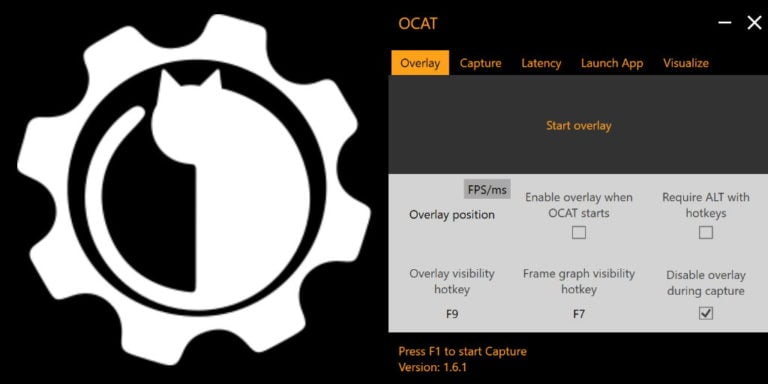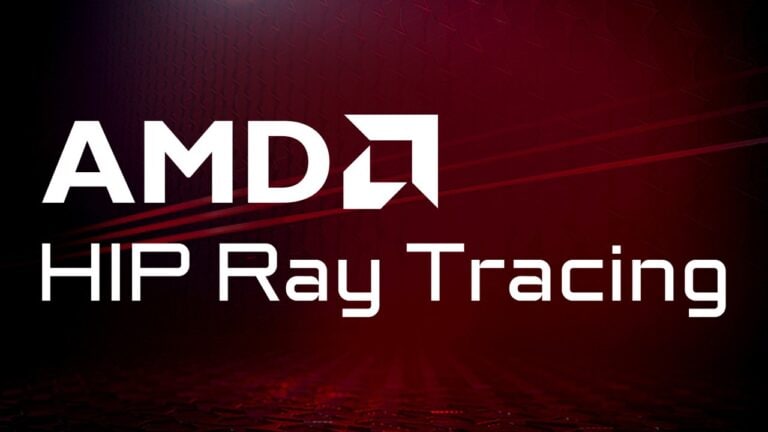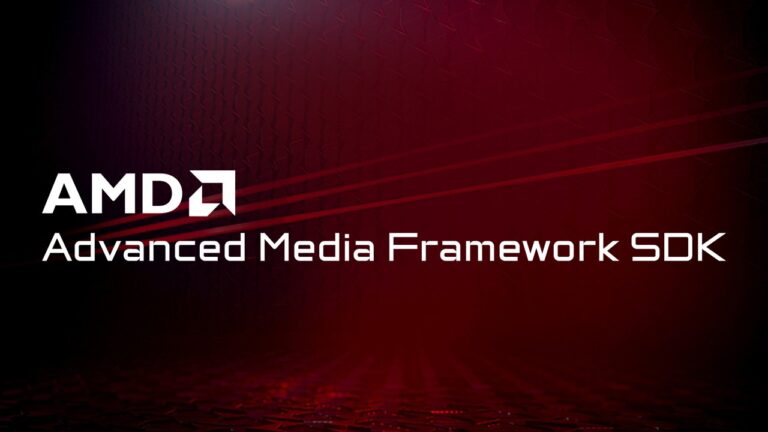
AGS is a helper library designed to provide a much clearer view of the GPUs in the system and the displays attached to them. It also exposes the ability to query each display for HDR capabilities and put those HDR-capable displays into various HDR modes, as well as access extensions for DirectX 11 and 12 that provide additional functionality and possibility for optimisations.
Download the latest version - v6.2
This release adds the following features:
- Version 6.2 has the addition of shader clock intrinsics to the API.
- Version 6.1.0 adds support for detecting the new RDNA 3 GPUs, adds versions of the static libraries that are built with the VS2022 toolset (v143) to help with integration into games or apps that build using the same tooling, and comes with a new simple sample that shows you how to use AGS extensions from DX12.
- It also includes the new features introduced with version 6.0:
- A ray tracing hit token that can be used to optimize some ray tracing scenarios on RDNA 2 hardware.
- Additional shader intrinsics, namely ReadLaneAt and float conversions.
- Detection for RDNA 2 hardware. It’s worth understanding that this should not be relied upon for detecting feature support like ray tracing or VRS. Its important to use the rendering API eg DirectX 12, to determine feature support as many features are a function of the hardware, OS and driver support.
- Detection of external GPUs.
Benefits
- Full GPU enumeration with adapter string, device id, revision id, vendor id, and ASIC family.
- GPU core and memory clock speeds.
- GPU local and shared memory.
- App registration extension for DirectX® 11 and 12.
- Wave reduce and wave scan intrinsics.
- User debug markers in DirectX® 11 and 12.
- Pre-built static libraries with popular CRT build settings.
- Per-GPU display enumeration including information on display name, resolution, and HDR and FreeSync™ Premium Pro capabilities.
- Optional user-supplied memory allocator.
- Function to set displays into HDR mode.
For DirectX® 11 only:
- DirectX® 11 shader compiler controls.
- DirectX® 11 multiview extension.
-
DirectX® 11 Crossfire API updates.
- Now supports using the API without needing a driver profile.
- You can also now specify the transfer engine.
Driver Extensions
AGS exposes shader extensions for both DirectX® 11 and DirectX® 12. It also provides access to additional extensions available in the AMD driver for DirectX® 11:
- Quad List primitive type.
- UAV overlap.
- Depth bounds test.
- Multi-draw indirect.
- Multiview.
Requirements
- AMD Radeon™ GCN-based or RDNA™-based GPU (HD 7000 series or newer)
- 64-bit Windows® 7 (SP1 with the Platform Update), Windows® 8.1, Windows® 10, and Windows® 11
- Visual Studio 2017 or newer (including Visual Studio 2022)
Version history
- Adds a ray tracing hit token that can be used to optimize some ray tracing scenarios on RDNA2 hardware.
- Additional shader intrinsics, namely
ReadLaneAtand float conversions. - Detection for RDNA 2 hardware. It’s worth understanding that this should not be relied upon for detecting feature support like ray tracing or VRS. Its important to use the rendering API eg DirectX 12, to determine feature support as many features are a function of the hardware, OS and driver support.
- Detection of external GPUs.
- Clock speed reporting for APUs.
- Reinstating the
sharedMemoryInBytesfield in theAGSDeviceInfostructure which is used for calculating the memory budget for APUs.
- x86 libs.
- Visual Studio 2019 support.
- Support for base vertex and base instance intrinsics.
- Support for
GetWaveSizeintrinsics. - Samples have been ported from premake to cmake.
- A better description of the GPU architecture for those wishing to fine tune their games for specific code paths.
- The ability to check if the GPU is an APU or not. This may be useful when budgeting for memory since the local memory reported will only be a small amount compared to the system memory the GPU has access to.
- Shader intrinsics for getting the draw index for execute indirect calls as well as support for atomic U64 ops.
- Radeon™ 7 and RDNA GPU core and memory speeds are now returned.
- For those using the static lib version of AGS, you may be pleased to hear we now ship the debug versions of these libs too.
Version 5.3 adds DirectX® 11 deferred context support for our MultiDrawIndirect and UAV overlap extensions, along with a helper function to let your app determine if the installed driver meets your game’s minimum driver version requirements. If you’re a Vulkan® user, you can pair that with our machine readable AMD Vulkan versions database, to get more information about the Vulkan® implementation in our client driver.
Lastly, there’s a new FreeSync 2 gamma 2.2 mode. It uses a 10-bit (per RGB component, 2-bit alpha) swapchain, as opposed to the 16-bit (per RGB component, 16-bit alpha) swapchain needed for FreeSync 2 scRGB.
Version 5.2 adds support for app registration in DirectX 12. App registration lets you give more information about your game or application to our driver, which can then use that (ideally unique) information to better support the game or app if we need to make driver-side changes to help things run as efficiently and correctly as possible.
We also changed how you get access to extensions under DX12, requiring you to create your GPU device using agsDriverExtensionsDX12_CreateDevice() , instead of the normal D3D12CreateDevice() call you’d make to D3D.
Lastly, we’ve also added support for breadcrumb markers in D3D11. Using the agsDriverExtensionsDX11_WriteBreadcrumb() API, you can put in place a strategy for debugging driver issues more easily. Sometimes your game or app can interact with the driver in a way that causes it to crash or TDR. The new API gives you the ability to leave markers around your D3D11 API calls, helping you narrow down exactly what interaction with the driver caused the problem.
Version 5.1 is a partly developer-focused update to AGS 5. We’ve listened to feedback about how difficult it can be to integrate the binary AGS libs into your games, and while we can’t open the source code to AGS to allow you to integrate it from source, we canvassed developers to figure out what pre-built binaries would be most useful to provide. So we’ve now added builds of the AGS binary library that are linkable with Visual Studio projects built with /MT and /MD, used to select a particular CRT.
There’s also a breaking change in how you get access to DX11 AMD extensions. Look at the Changelog for details on that. We’ve also added an application registration extension for DX11 apps. That lets you tell the driver that your game can be considered in a uniquely indentifiable way, which is particularly helpful if you build on top of popular middleware like Unity or UE4 and make rendering changes.
There’s also support for FreeSync 2 HDR, DX12 application user markers for Radeon GPU Profiler, VS2017 versions of the shipping samples, and new wave-level shader intrinsics for both DX11 and DX12.
Related to AGS

AMD GPU Services (AGS) 6.1 is now available
AMD GPU Services (AGS) 6.1 is now available, adding RDNA 3 GPU support, VS2022 versions of the static libs, and a new sample showing you how to use AGS extensions from DX12.

OCAT v1.6.1 adds support for RDNA™ and RDNA™ 2
The latest version of our Open Capture and Analysis Tool (OCAT) brings support for all RDNA™ architectures, and now retrieves resolution information in window mode.

AGS 5.4.1 now available
AGS v5.4.1 now out, which includes GetWaveSize intrinsics as well as BaseInstance and BaseVertex for indirect drawing.

AGS SDK 5.4 improves handling of video memory reporting for APUs
When determining total available graphics memory, things can often be complicated by whether you’re on an APU or a discrete GPU, and whether the information you require is available in the graphics API you’re using.

Decoding Radeon™ Vulkan® versions
A guide to using our machine-readable mapping that you can integrate into your software for decoding Radeon™ Vulkan® versions.

AMD GPU Services, An Introduction
Useful information about features within our AMD GPU Services (AGS) library.

CrossfireAPI11
This sample demonstrates how to use the explicit Crossfire™ application programming interface (API).

DepthBoundsTest11 DirectX® 11 SDK Sample
The DepthBoundsTest11 sample shows how to use the Depth Bounds driver extension.
Our other SDKs

Capsaicin is a Direct3D12 framework for real-time graphics research which implements the GI-1.0 technique and a reference path-tracer.

The Render Pipeline Shaders (RPS) SDK provides a framework for graphics engines to use Render Graphs with explicit APIs.

ADLX is a modern library designed to access features and functionality of AMD systems such as Display, 3D graphics, Performance Monitoring, GPU Tuning, and more.

Brotli-G is an open-source compression/decompression standard for digital assets (based on Brotli) that is compatible with GPU hardware.

HIP RT is a ray tracing library for HIP, making it easy to write ray tracing applications in HIP.

Orochi is a library which loads HIP and CUDA® APIs dynamically, allowing the user to switch APIs at runtime.

AMD Radeon™ ProRender is our fast, easy, and incredible physically-based rendering engine built on industry standards that enables accelerated rendering on virtually any GPU, any CPU, and any OS in over a dozen leading digital content creation and CAD applications.

Radeon™ Machine Learning (Radeon™ ML or RML) is an AMD SDK for high-performance deep learning inference on GPUs.

Harness the power of machine learning to enhance images with denoising, enabling your application to produce high quality images in a fraction of the time traditional denoising filters take.

The Advanced Media Framework SDK provides developers with optimal access to AMD GPUs for multimedia processing.

The D3D12 Memory Allocator (D3D12MA) is a C++ library that provides a simple and easy-to-integrate API to help you allocate memory for DirectX®12 buffers and textures.

The AMD Display Library (ADL) SDK is designed to access display driver functionality for AMD Radeon™ and AMD FirePro™ graphics cards.




